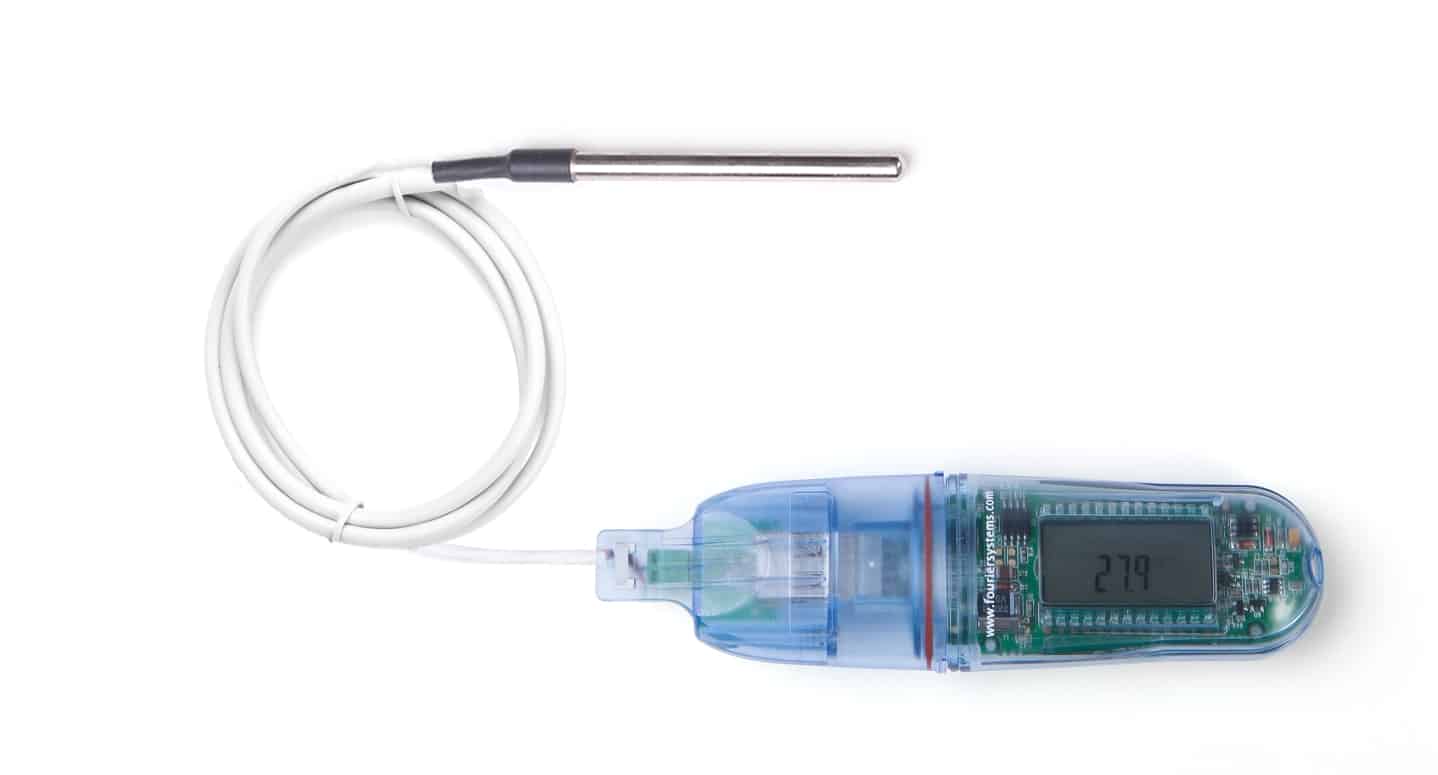What is calibration, and why do it?
There is no such thing as a perfectly accurate measurement instrument, no matter how expensive or high-end device it may be. Every measurement device will have some amount of error. The allowable measurement error is usually specified by the manufacturer as its “Accuracy”. For example, a temperature data logger might be offered with an accuracy of ±0.5°C. This means that whatever temperature the logger records are guaranteed to be within 0.5° Celsius above or below the actual temperature it’s trying to measure.
This is perfectly OK for the purposes of most instruments. We don’t need to have “perfect” measurements in order for them to be valid. For example, if a data logger is recording the temperature inside a vaccine fridge, we might need to be sure that the vaccines were stored between 2°C and 8°C degrees Celsius at all times. So, using our example logger with an accuracy of ±0.5°C, as long as the logger recorded temperatures between 2.5°C and 7.5°C, we can be very confident that our vaccines are safe.
However, as time goes by, instruments can “drift”, meaning that their measurements change compared to what they measured when new. Continuing the above example, a data logger that measured 0.2°C below the real temperature when new might gradually drift over a period of 2 years until it’s eventually measuring 0.7°C below the actual temperature, which is outside its accuracy specification. The end result of this could be that we think our vaccine fridge is safely running at 7.5°C (as reported by our logger) but in reality, it’s running at 8.2°C, and our vaccines are no longer safe. In the case of vaccine storage, this could have severe health and economic implications. We can see from this example how important it is to get instruments checked regularly to make sure they remain within their accuracy specification

Calibration is the procedure that checks your measurement equipment to ensure it is measuring correctly within its rated accuracy specification. The procedure may also include adjusting the instrument to bring it within the specification. This is usually done by a specialized laboratory using equipment that has already been calibrated to national standards. Only by arranging regular calibration checks can we stay confident in the measurements made by our instruments.
How often should I calibrate my equipment?
It is best to arrange for equipment to be calibrated regularly to ensure it stays within manufacturer specifications. The best time period between calibration checks depends on many factors including:
- The nature of the sensor and expected drift: modern temperature instruments & sensors tend to be relatively stable, but other sensor types such as humidity / CO2 / water quality /etc tend to drift more over time.
- The importance of the measurements’ accuracy to the user: some users require very accurate measurements to guarantee their processes are valid; others only want a rough indication and don’t need high accuracy.
- The recommendations of the manufacturers: manufacturers often give a guideline as to how often calibration should be checked.
- The environment in which the sensors are used: harsh environments with dust / condensation / chemicals/temperature extremes (etc) will cause sensors to drift faster than benign environments.
- Regulatory requirements: sometimes government regulations require that instruments must be calibrated at particular intervals, e.g. US FDA guidelines.
The most common interval for calibration checks is 1 year, as it is short enough to capture the drift of most common sensor types but long enough to minimize costs and downtime. However, it is ultimately up to you to decide what calibration interval works best for you. If you’re not sure, give us a call to discuss.
It is also a good idea to review the calibration interval from time to time: whenever you send a device to get calibrated, you will receive a report showing how far it has drifted from the actual measurement. Hence, you can see how the measurements are changing over time and decide whether to shorten or lengthen the calibration interval.
How is calibration done?
Calibration can be done by sending your equipment to a calibration laboratory or arranging an on-site calibration by such company. You may also perform basic calibration checks by yourself if you have the required reference equipment and know the correct procedures.
When sending the equipment to an external lab for calibration, it means taking the equipment out of service for a week or so. If the equipment is critical, it is common for a second device to be purchased so that there’s always one available, even when the other device has been sent for calibration.
Within the lab, trained technicians are supposed to perform the calibration procedures, which depend very much on what the equipment has to measure, as well as other factors. For example, the temperature can be calibrated by placing the temperature sensors in a water bath or temperature chamber, allowing them to stabilize, and measuring the same bath/chamber with a calibrated reference instrument at the same time. Humidity calibrations may be done in a humidity chamber or in a small chamber with special salts that maintain a particular humidity. Electrical calibrations are done with specialized electrical equipment and so on.
The calibration checks may be done at one, two, or three different measurement points to confirm the instrument measures correctly over a particular range. For example, you might calibrate a temperature logger at 0°C, 25°C and 50°C – this would give you confidence that the logger is measuring correctly for all temperatures between 0°C and 50°C.
When the technician performs the calibration checks, it is essential to know the technical limitations and pitfalls of the procedure, such as how long it will take for a sensor to stabilize to the surrounding temperature before a measurement can be taken. Each kind of measurement has its own potential issues, and rigorous procedures must be followed to make sure the calibration is done correctly.
All reference equipment that’s used to calibrate devices will also need to have been calibrated against a higher standard. Ultimately, it’s up to the national standards reference body to maintain the official measurement standards.
7 Point Calibration Checklist
When you purchase and use measurement equipment, it is essential to decide on your calibration approach right from the outset. The points you need to consider are as follows:
- What measurements are you using that need to be checked for calibration regularly? (e.g., temperature, humidity)
- What accuracy is required, and over what range of measurement? (e.g., ±0.5°C accuracy needed between 0°C and 10°C)
- What are the real-world consequences of the equipment drifting out of calibration? (e.g. a whole fridge full of medicines & vaccines may need to be discarded, and people’s health could be harmed)
- What is the best calibration interval for your equipment? If you’re not sure, start with a 12-month interval. If you know the sensors are exposed to a harsh environment such as condensation or harsh chemicals, opt for 6 months or even 3 months for a very harsh environment. After a couple of calibration checks, observe how much the measurements have drifted over time, and lengthen or shorten your calibration period accordingly.
- Do you require an authorized labaratory to do the calibration, or can you perform it by yourself?
- What are the key measurement points that you MUST be sure the measurements are accurate? e.g. if you need to keep goods between 2°C and 8°C, the 2 and 8-degree points are critical to be correct. When requesting calibration, specify that these points must be calibrated.
- Do you need to purchase additional sensors or instruments to cover the period when your main instrument is away for calibration?
If you’re unsure about any of these points, the first thing to do is chat with your equipment supplier to find out more or contact Fourtec’s Customer Support to talk through the calibration requirements.

